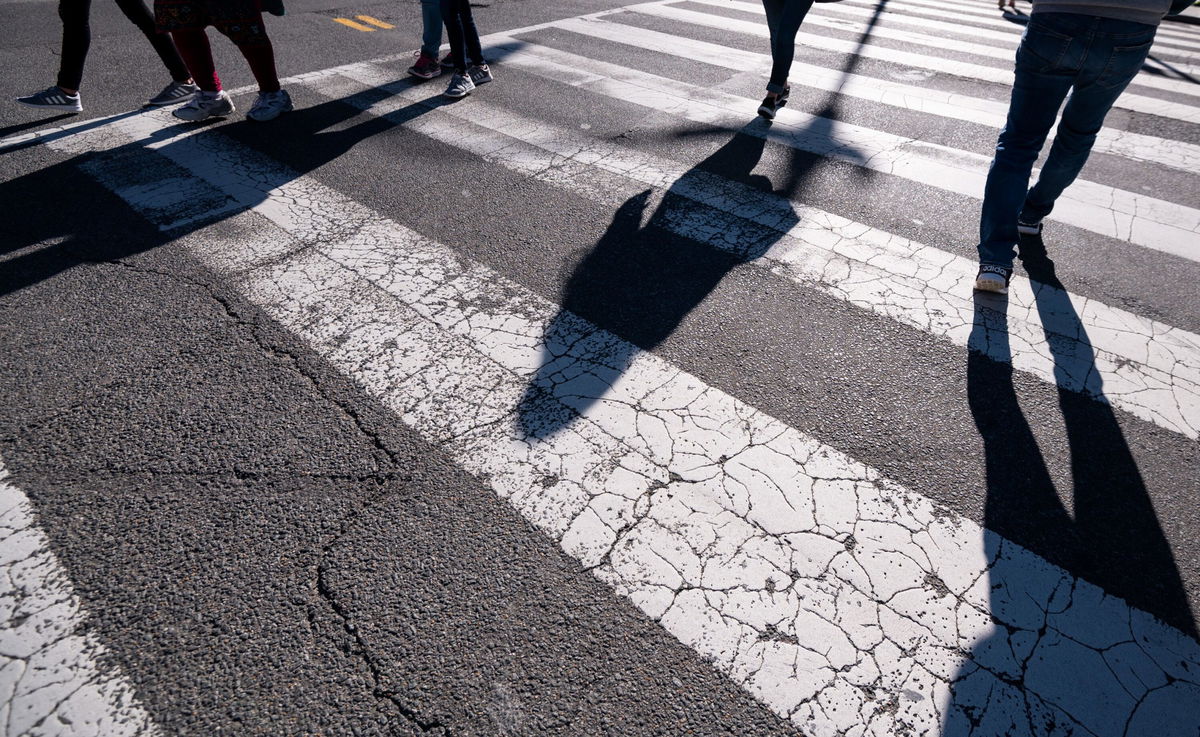Traffic deaths jump for Black Americans who couldn’t afford to stay home during Covid

By Matt McFarland, CNN Business
Traffic deaths soared in 2020 despite Americans driving less due to the pandemic, and Black Americans bore a disproportionate share of the increase in fatalities.
The National Highway Traffic Safety Administration estimated earlier this month that 38,680 people died in motor vehicle crashes in 2020, the largest projected number of deaths since 2007, despite a 13.2% decrease in miles traveled from the prior year. When broken down along racial lines, white pedestrian deaths grew 4%, American Indian fatalities grew 11%, and Asian and Pacific Islander deaths declined 29%.
But NHTSA found the largest increase in deaths — 23% — among Black people in what appears to be a stark illustration of which populations could and could not afford to stay home throughout the pandemic.
Deaths of Black Americans had already been increasing in recent years, with a 16% increase from 2005 to 2019, according to NHTSA data. In the same time period, traffic deaths for White people fell 27.8%.
Traffic safety advocates told CNN Business the 2020 increases are concerning but not surprising, and said with less cars on the roads, people drove faster, making roadways less safe for drivers, passengers, pedestrians and cyclists. Where Americans live and where they work were likely contributing factors to who died.
“Same story, different day. That’s unfortunate,” was how Charles Brown, who leads the urban planning and policy policy firm Equitable Cities, described his initial reaction to the 2020 fatality data and 23% increase in Black deaths.
“This tells me who was required to travel out and about, and who was allowed to work from home,” Eulois Cleckley, executive director of the Denver Department of Transportation told CNN Business. “We have a lot of work to do to fix our infrastructure and make it much more safe.”
He said that 5% of Denver’s roadways contribute to over 50% of its fatalities, and the deadliest roadways are overwhelmingly in mostly minority, low-income areas.
Cleckley and other transportation experts said that the pandemic worsened long-running inequities and made them more glaring. Black Americans have historically borne the brunt of transportation-related impacts, according to Alex Karner, a University of Texas-Austin professor who researches the environmental and health effects of transportation. He pointed to the Interstate Highway System, and said Blacks and low-income residents were generally the ones displaced to build it.
Angie Schmitt, a transportation consultant and author of “Right of Way,” a book about pedestrian deaths in the US, said she was disappointed to not yet see Secretary of Transportation Pete Buttigieg comment on the 2020 fatalities or the racial disparity.
“We need to have a real wake-up call in the United States,” Schmitt said. “It’s a good time for leaders to recommit to safety. What we’re doing isn’t working very well.”
Following an inquiryregarding Buttigieg’s apparent silence on the new data, a NHTSA spokesperson sent CNN Business a statement from Buttigieg calling safety a top priority.
“Last year’s traffic fatality rates and the racial disparities reflected in them are unacceptable. This reflects broader patterns of inequity in our country — and it underscores the urgent work we must undertake as a nation to make our roads safer for every American,” Buttigieg said in the statement.
Buttigieg also said that President Joe Biden’s American Jobs Plan calls for a $20 billion investment in safety, including $10 billion for safe streets, which would fund efforts to reduce accidents.
Even before the 2020 data, Buttigieg had spoken about racial disparities in pedestrian safety, highlighting research that found it’s far more dangerous for Blacks, American Indians and Alaska Natives to be pedestrians. From 2010 to 2019, Black people were killed by drivers at an 82% higher rate than White, non-Hispanic Americans, according to the transportation organization Smart Growth America.
Several local transportation leaders said they’re seeing promising steps at the federal level. Keith Benjamin, director of the Charleston, South Carolina department of traffic and transportation, told CNN Business he was excited by Buttigieg changing the criteria for grants this year to include racial equity and climate change resiliency.
He added that there are many simple and easy fixes that can be done on a local level to improve safety.
“It matters when somebody steps into the street that they have a safe crosswalk,” Benjamin said. “It matters that our design criteria is indicative of more than just an individual motor vehicle.”
The United States is the only industrialized country with worsening traffic safety, according to Alex Engel, a spokesman for the National Association of City Transportation Officials. The US, for example, has twice the traffic deaths as Canada, when adjusted for population, according to data from the World Health Organization.
“This is a public health crisis that we’re not talking about or treating like one,” said Tara Goddard, a Texas A&M professor who researchers transportation planning and safety.